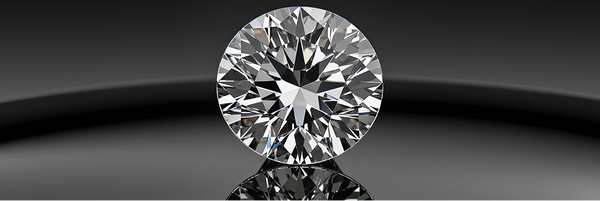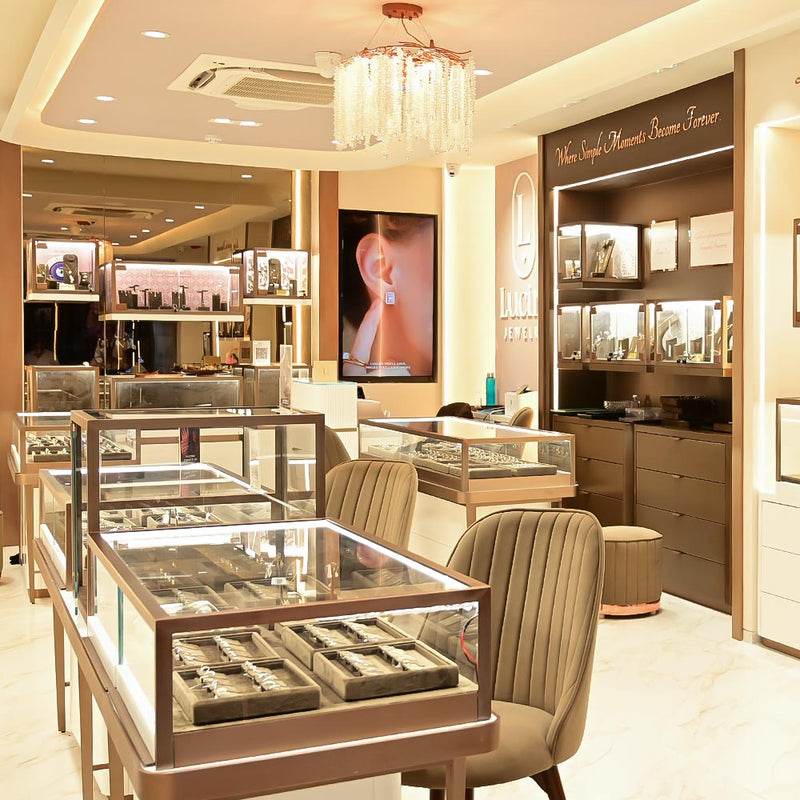Introduction – The Sparkle of Science and Sustainability
Have you ever wondered how lab grown diamonds are made and how they achieve the same brilliance as natural ones? In today’s era of conscious luxury, lab grown diamonds have emerged as a perfect blend of science, sustainability, and timeless beauty. They are physically, chemically, and optically identical to mined diamonds — the only difference lies in how they are formed.
At Lucira Jewelry, we believe that elegance and ethics should coexist. Our lab grown diamonds are created with cutting-edge technology that replicates the natural diamond-growing environment, offering brilliance without compromise.
What Are Lab Grown Diamonds?

Lab grown diamonds are real diamonds created in advanced laboratories under controlled conditions that mimic the natural diamond formation process deep within the Earth. Each diamond begins as a small carbon “seed,” which is then exposed to the same heat and pressure that nature uses over billions of years — but in a much shorter time.
These diamonds possess the same hardness, clarity, and sparkle as mined diamonds. The only difference is their origin. Because lab grown diamonds avoid traditional mining, they are an ethical and sustainable choice for modern consumers.
For anyone wondering lab grown diamonds how they are made, the answer lies in precision, technology, and a commitment to sustainability.
The Two Main Methods: HPHT and CVD
HPHT – High Pressure, High Temperature

The HPHT process is the original method of creating lab grown diamonds. It involves placing a diamond seed into a carbon source and subjecting it to intense heat (about 1,500°C) and pressure (around 1.5 million pounds per square inch). Under these conditions, carbon atoms begin to crystallize around the seed, gradually forming a rough diamond.
This process closely mirrors how natural diamonds form deep within the Earth. HPHT is often used to create larger or specific-color diamonds, making it ideal for high-end jewelry.
CVD – Chemical Vapor Deposition
The CVD process represents the future of diamond creation. In this method, a thin diamond seed is placed inside a sealed chamber filled with carbon-rich gases, such as methane. The gases are ionized using microwave energy, causing carbon atoms to separate and slowly deposit onto the seed layer by layer.
The result is a stunning diamond of exceptional purity and clarity. CVD allows for greater control, producing diamonds that are both visually flawless and environmentally responsible.
Both methods explain how lab grown diamonds are made, showcasing science’s ability to recreate one of nature’s rarest wonders.
HPHT vs. CVD: Which Method Does Lucira Use?
Both CVD and HPHT are methods to create lab-grown diamonds, but they differ in process and results. Here’s a comparison to help you understand:
Because of these advantages, CVD diamonds are increasingly becoming the preferred choice for luxury jewelry brands and conscious buyers.
At Lucira Jewelry, we use advanced CVD technology to ensure that every diamond shines with unmatched clarity and ethical confidence. Our engagement ring for women and couple rings are perfect examples of CVD diamonds crafted for modern elegance.
Every Lucira diamond comes with IGI certification, guaranteeing authenticity, quality, and ethical sourcing. Our craftsmanship is guided by a simple philosophy — creating beauty without compromise.
Why Lab Grown Diamonds Are the Future of Fine Jewelry

Lab grown diamonds are redefining the jewelry industry. They offer all the beauty of natural diamonds while aligning with modern values of sustainability and transparency. Here’s why more people are choosing them:
- Ethical and Conflict-Free: No mining, no exploitation — just pure, traceable origins.
- Environmentally Responsible: Significantly lower carbon footprint and no ecological damage.
- Affordable Luxury: Up to 40% more affordable than mined diamonds of the same quality.
- Certified Quality: Every diamond is independently graded for cut, clarity, color, and carat.
- Customizable Designs: Choose from a variety of shapes, cuts, and settings to suit your style.
Lucira Jewelry brings these advantages to life, creating jewelry that celebrates both love and responsibility. Explore our lab grown diamond earrings or lab grown diamond necklace collections to see elegance redefined.
How Lab-Grown Diamonds Are Made — Everything You Need to Know
If you’ve ever wanted to see how lab grown diamonds are made, Lucira offers you the opportunity to learn through our educational guides and virtual consultations. Our experts walk you through the entire process — from diamond growth to crafting the perfect piece.
Each Lucira creation reflects innovation, integrity, and artistry. Visit our experience store or schedule a video consultation to witness the brilliance of 1 carat lab grown diamond price in India firsthand.
Lab Grown Diamonds vs. Simulants: Clearing the Confusion

It’s important to understand that lab grown diamonds are not the same as diamond simulants like cubic zirconia or moissanite. Simulants only resemble diamonds in appearance but differ in composition and properties.
Lab grown diamonds, on the other hand, are made of pure carbon, just like natural diamonds. They score a perfect 10 on the Mohs scale of hardness and possess the same sparkle and fire that make diamonds so desirable.
When you choose Lucira, you’re choosing real diamonds — just made responsibly.
Lab Grown Diamonds: How They Are Made to Last a Lifetime

Each Lucira diamond is crafted to last a lifetime. The advanced processes of HPHT and CVD ensure structural integrity and unmatched brilliance. Our designs, made with precious metals and expert craftsmanship, transform these diamonds into heirlooms meant to be cherished forever.
At Lucira Jewelry, every creation embodies our promise: crafted to last, designed to shine. Explore our curated earrings and earrings for men for timeless pieces.
Conclusion
Understanding how lab grown diamonds are made reveals more than just a scientific marvel; it reflects a conscious choice for a better future. These diamonds represent love, innovation, and responsibility — values that define modern luxury.
Lucira Jewelry continues to lead India’s ethical jewelry movement, combining precision technology with timeless craftsmanship. Because true beauty should never come at the planet’s expense.
Now that you understand lab-grown diamond creation, explore Lucira’s exclusive collection of certified, ethical, and handcrafted lab grown diamond jewellery — from engagement rings to elegant necklaces, each piece tells a story of brilliance and responsibility.


